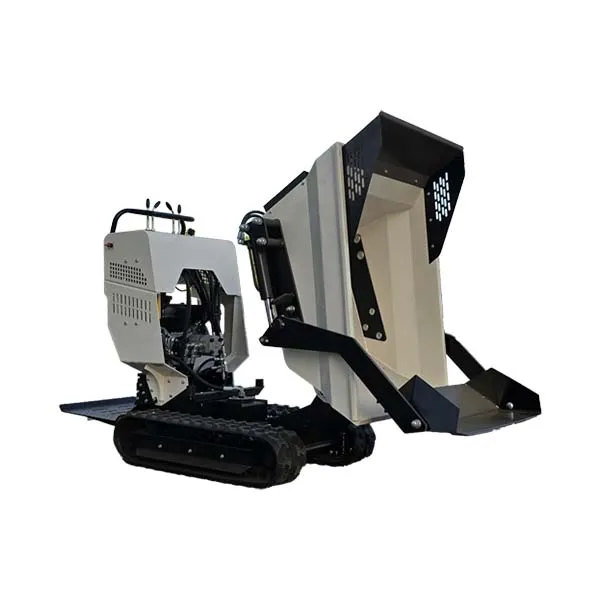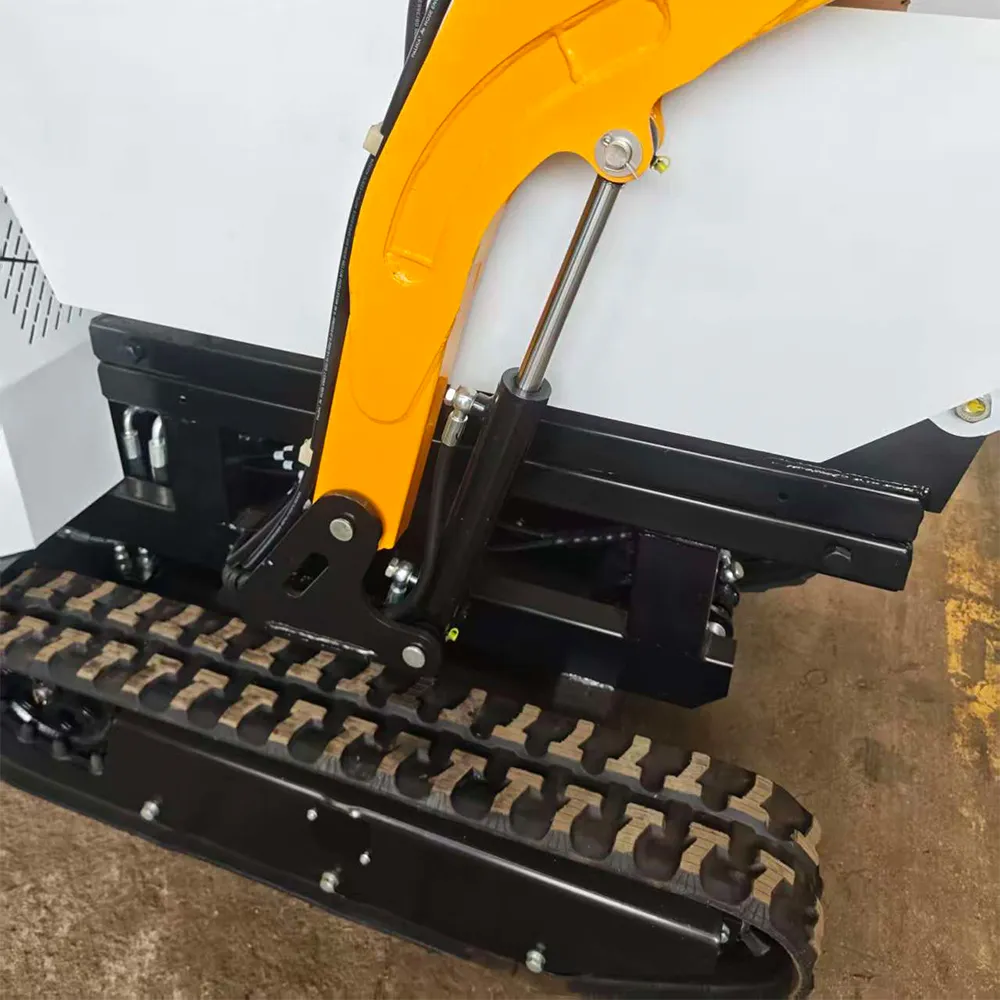Om te voorkomen dat uw vraag te laat wordt beantwoord, verzoeken wij u om uw WhatsApp/Skype-bericht mee te sturen met het bericht. Zo kunnen wij direct contact met u opnemen.
We will reply you within 24 hours. If for urgent case, please add WhatsApp/WeChat: +8613791936882 ,. Or call +86-18678911083 directly.
Soft ground, steep slopes, and tight access make moving spoil slow and risky. A crawler dumper puts power to the track where wheeled truck and barrows fail—delivering safe, fast, low-ground-pressure hauling across brutal terrain.
A crawler dumper (tracked carrier) is a compact machine that uses rubber tracks and a hydraulic dump body to haul and tip materials where wheeled vehicles bog down. With high traction, low ground pressure, and tight turning, a mini dumper boosts productivity on mud, sand, slopes, and sensitive surfaces—ideal near an excavator, in forestry, agriculture, utilities, and urban jobsites.

A crawler dumper is a tracked carrier with a front or rear dump body. Power from the engine drives a hydrostatic hydraulic system that turns the track motors and lifts the bed. Compared with a small truck, a tracked dumper places a wide footprint on the ground. That spreads load, reduces rutting, and lets crews haul aggregates, spoil, and timber where a wheeled machine would spin.
Inside the chassis, the power unit (diesel or battery) powers two hydrostatic loops: travel and tip. Travel uses variable-displacement pumps to modulate speed and torque; tipping uses a dedicated circuit so the operator can tip while crawling at low speed. On modern mini dumper models, hydraulic joystick controls of hydraulic pilot controls give very fine controle near trenches and structures.
Traction & flotation. Rubber tracks deliver more contact area than tires. That lowers ground pressure, helping a tracked dumper float on peat, clay, dune sand, and forest litter. Where wheelbarrows stall and pickups sink, a crawler keeps hauling.
Gradeability. With a low center of gravity and long track base, a crawler dumper holds lines on grades and side-slopes. Pair it with an excavator and you gain continuous cycles on moisture-sensitive jobs.
Surface protection. Golf courses, vineyards, wetlands, and landscaped parks need minimal disturbance. Tracks reduce scarring and maintenance costs for owners—especially municipal or forestry clients.

Steel construction matters. Look for thick side walls, boxed subframes, and reinforced hinge points. A stronger chassis resists twist when one track rides higher.
Dump body types:
Standard equipment should include tie-downs, work lights, reversing beeper, and hose guards. Optional bed liners and hardox floors extend durability.
1) Forestry extraction road (soft substrate)
A mid-size crawler dumper replaced 6× pickups on a clay spur. With 6-t payload and swivel bed, cycles improved 27%. Road remediation dropped by half due to lower rutting. Fuel stayed predictable; idling cut with auto-stop. Uptime rose thanks to simple side access servicing.
2) Urban basement dig (tight access)
A mini tracked dumper (1-t) shuttled spoil from an alley excavator to street skips. Narrow width cleared gates. Noise-sensitive residents accepted evening runs thanks to low sound levels. With a small crew, the program finished one week early.

What’s the difference between a crawler dumper and a tracked carrier?
They’re commonly used interchangeably. “Tracked carrier” is the platform; add a dump bed and you have a crawler dumper. Carriers can also mount cranes, water tanks, or tools.
How do I size a dumper to my excavator?
Match one dumper load to 4–6 buckets from your excavator. If the dumper is waiting or arriving half-empty, your pair isn’t balanced—adjust payload or bucket size.
Are rubber tracks durable on rocky sites?
Yes, with correct shoe width and quality compound. Keep tension in spec, avoid sharp turns on abrasive rock, and rotate machines to even wear.
Is battery a good option?
For indoor, tunnels, or night works, electric mini dumpers reduce fumes and noise. Check duty cycle and charging logistics; for remote forestry, diesel is still practical.
What safety features matter most?
ROPS/FOPS, camera + beeper, non-slip steps, side access, seat belt interlock, and predictable control response. On slopes, never exceed rated grade and keep loads low.
Can I transport a crawler dumper on a small trailer?
Many mini models fit plant trailers. Confirm operating weight, width, tie-downs, and regional limits. Larger units need a low-loader.